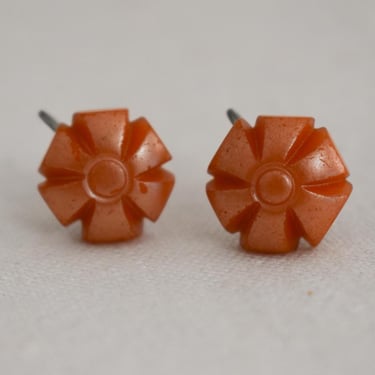
1930s/40s Bakelite Flower Screw Back Earrings
Vintage 1930s/40s carved Bakelite flower screw back earrings. They are a deep orange color, with a front luster finish. I have tested them with ...
$$$$$ · Indexed October 31, 2024 · Source
etsy.com
Content may be subject to copyright. Terms of Use
Blackbird Antiques
Asheboro, NC
Still looking? Try a search.

